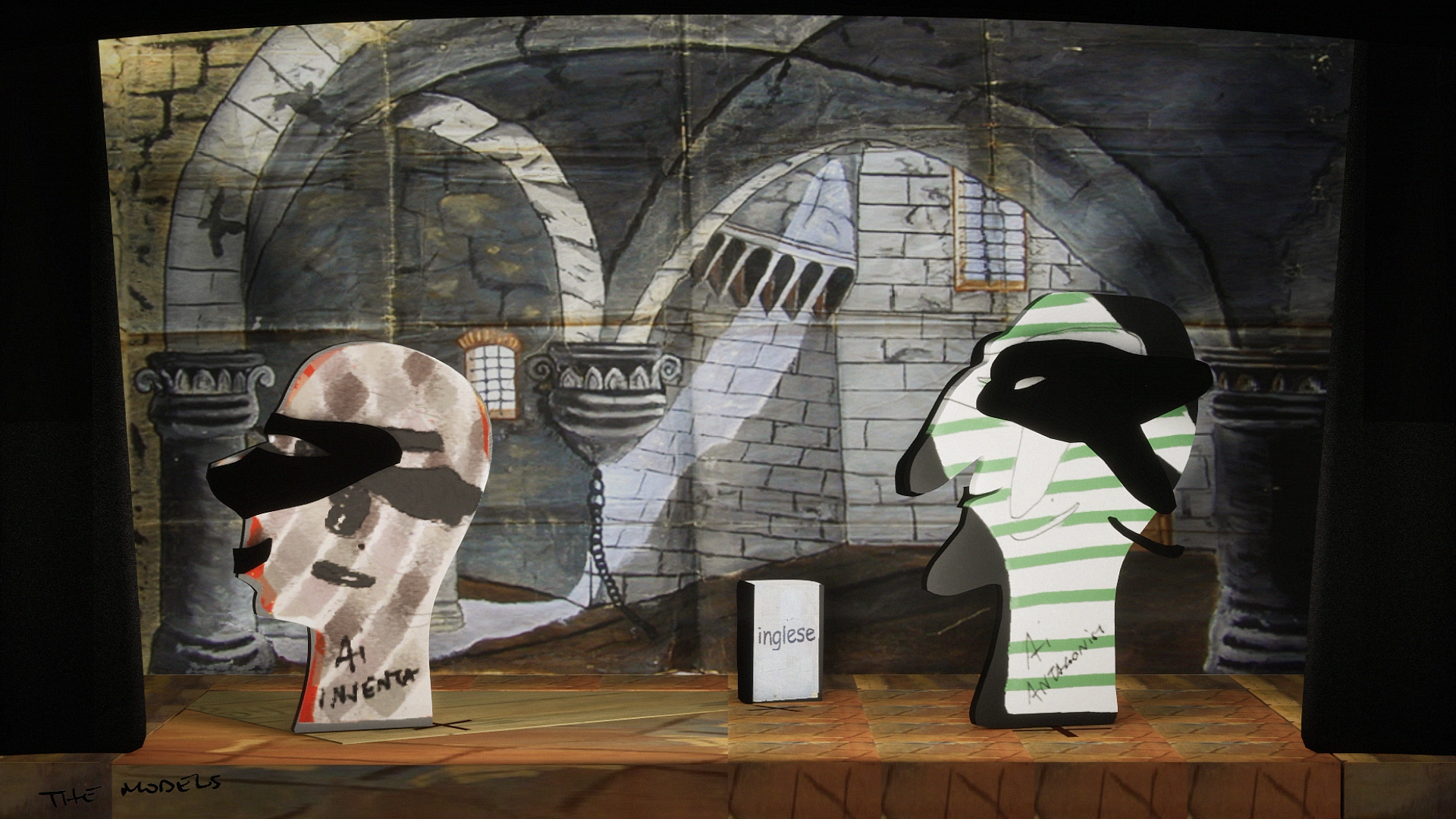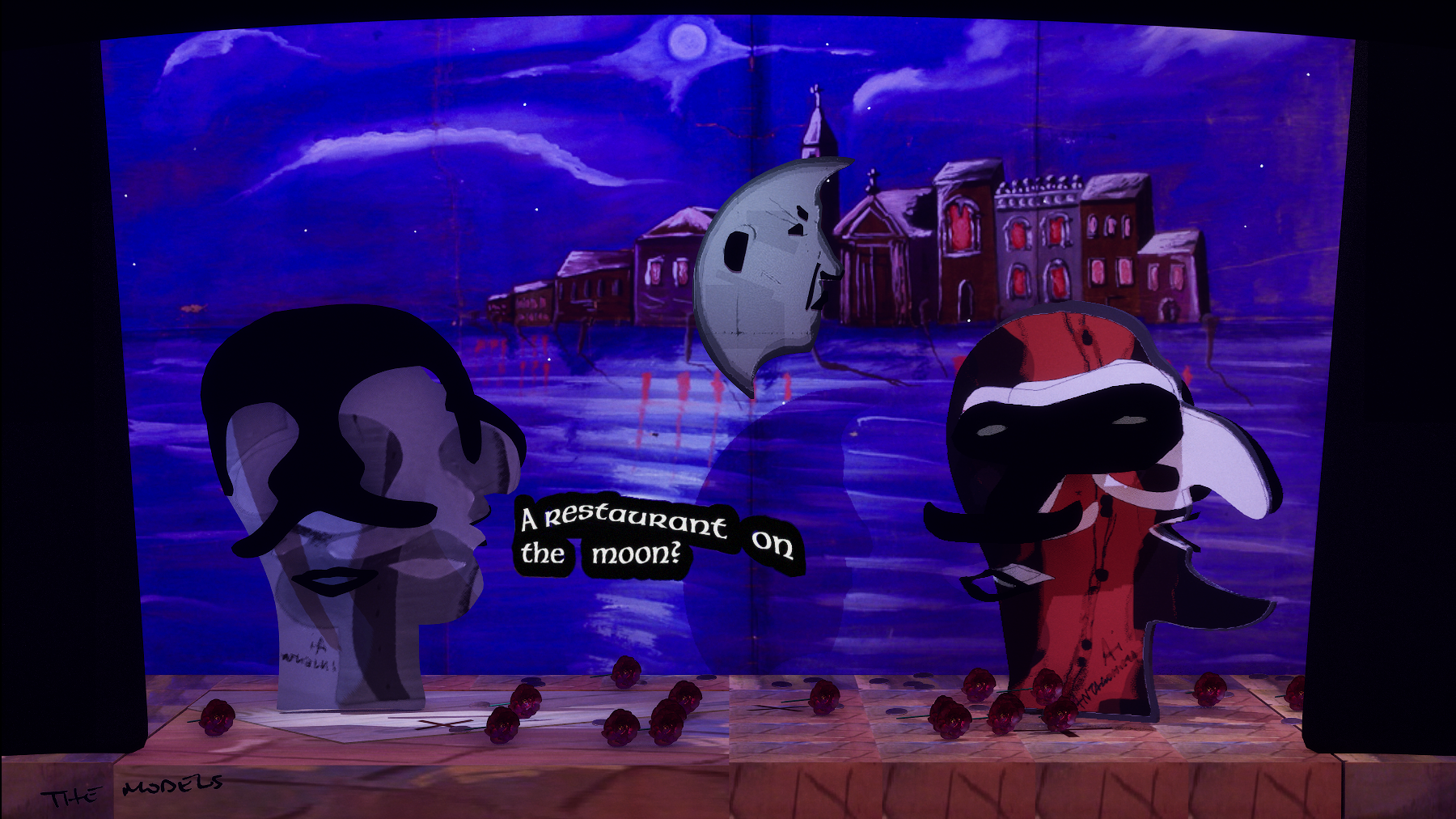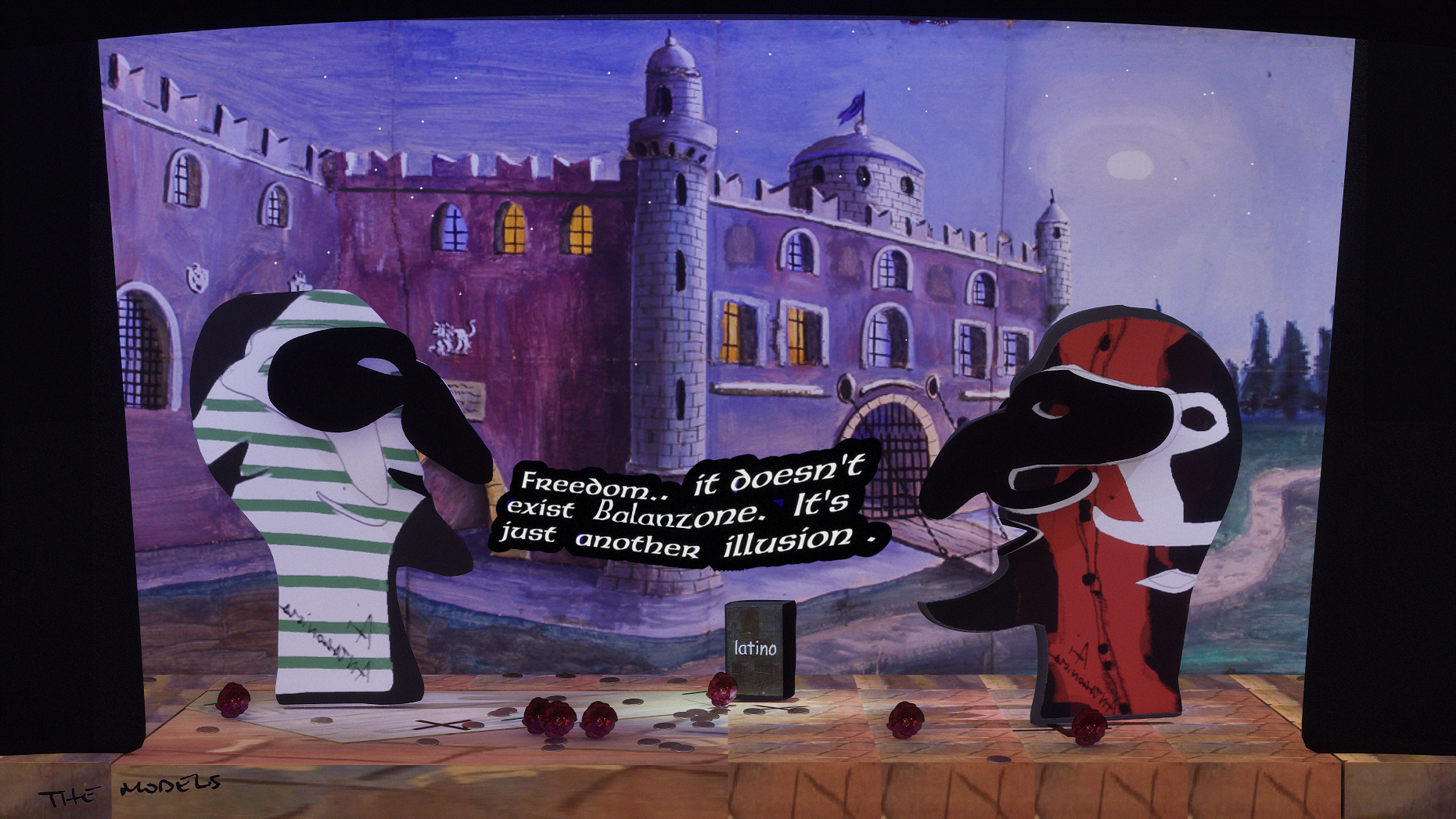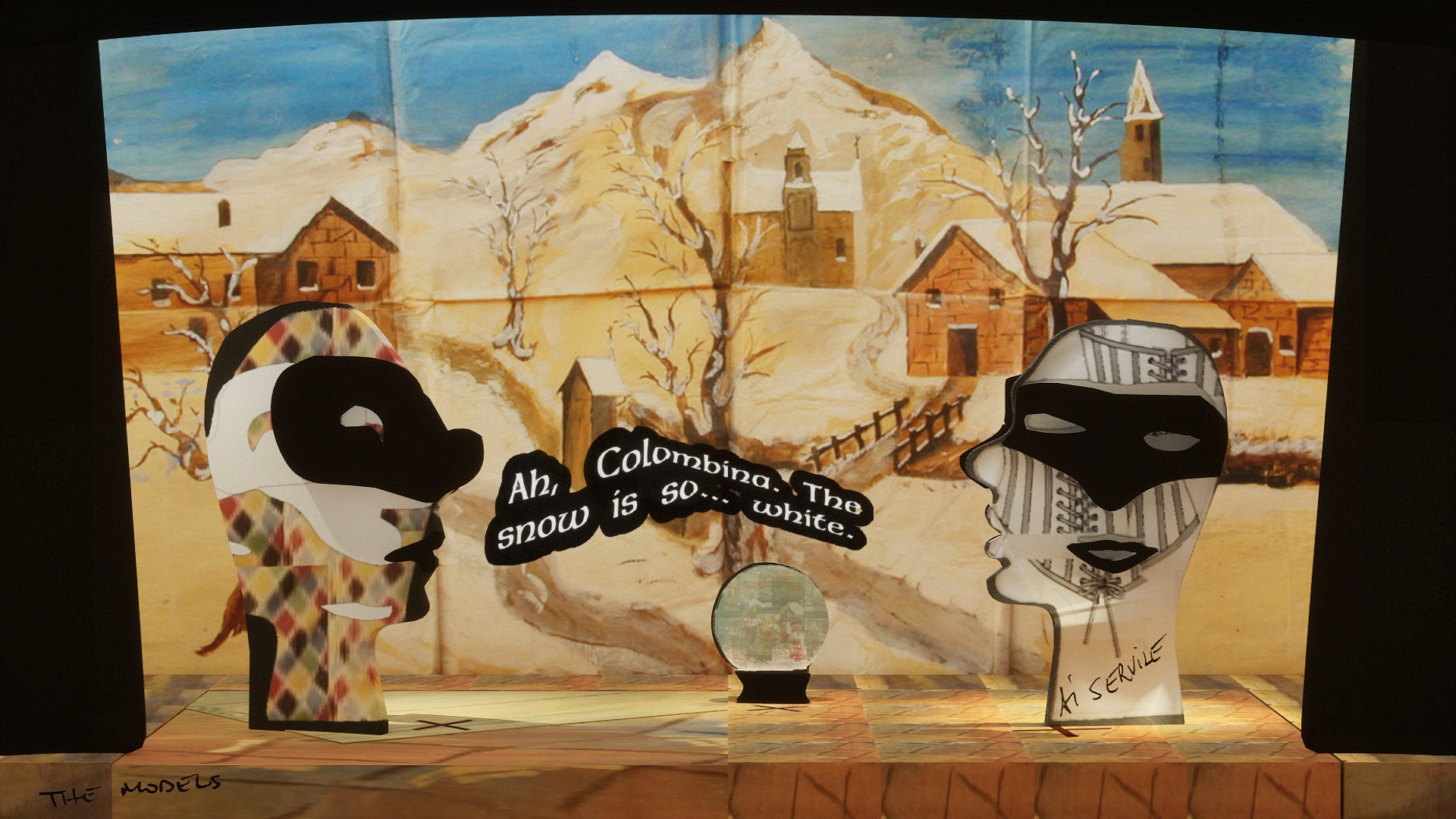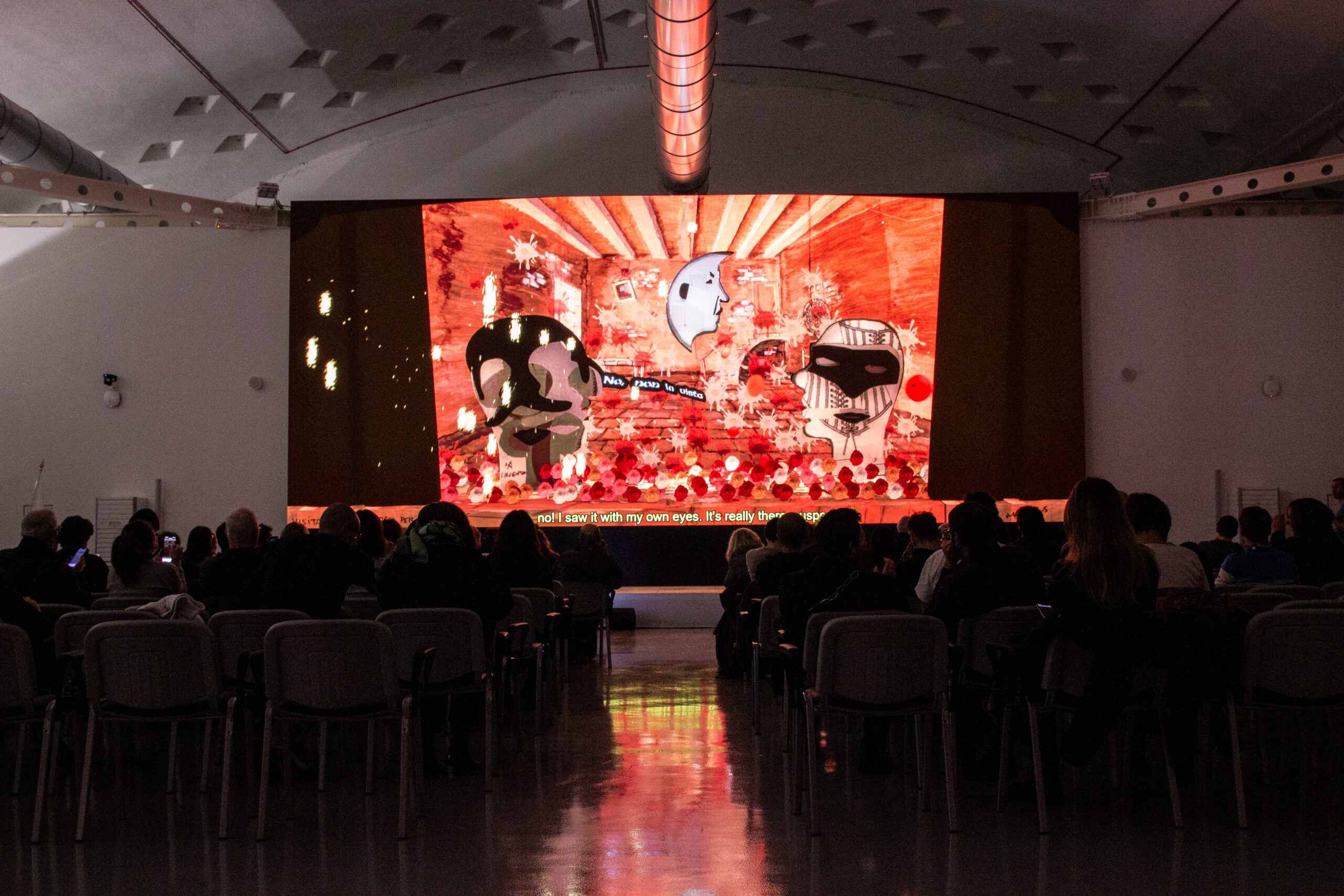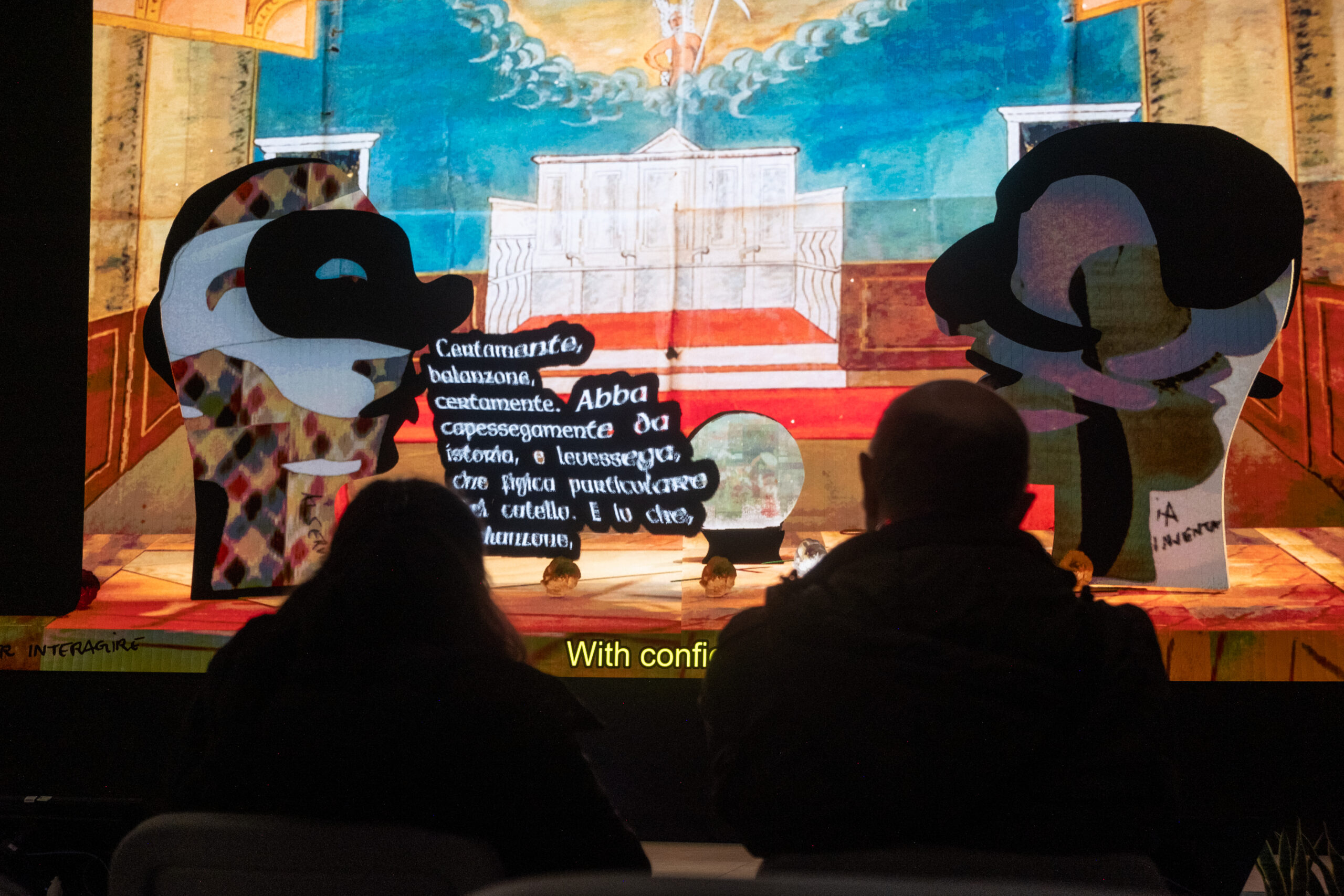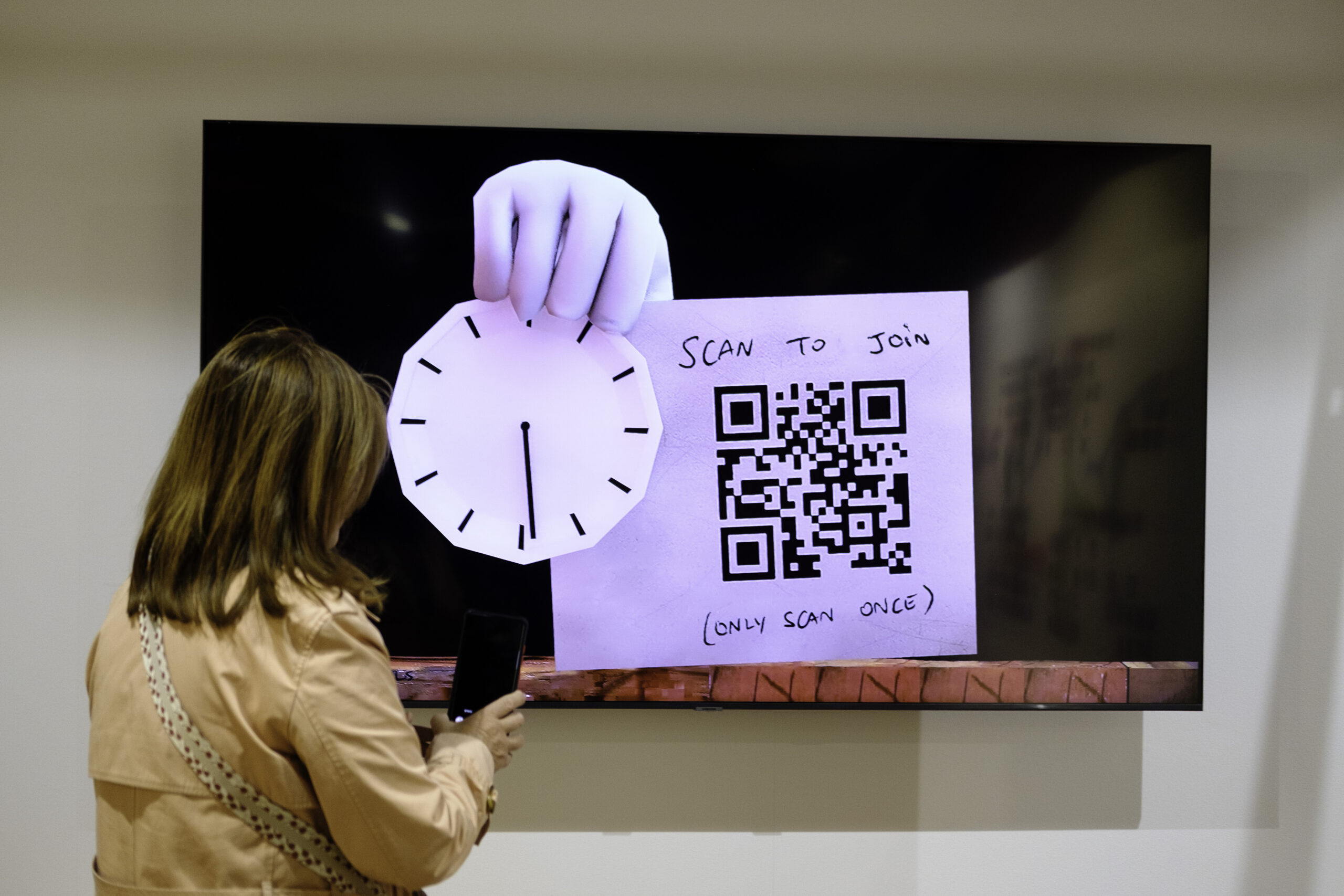The Models is an interactive installation exploring the improvisational nature of generative AI, and its sometimes unexpected and nonsensical character. The installation is powered by a 3D simulation running on a video game engine and depicting a year’s worth of theatrical scenes improvised in a style inspired by Italian Commedia dell’Arte.
The installation features dialogues generated by a system of AI models impersonating traditionally servile, lying or antagonistic Commedia masks—Arlecchino, Balanzone, Brighella, Colombina, Pantalone and Pulcinella—and improvising around a set of controversial props that symbolise superstition, folklore, and popular falsehoods.
These characters scheme, invent, conspire, or make trivial mistakes, embodying both the archetypal traits of Commedia dell’Arte and linguistic and narrative tendencies observed in Large Language Models—the foundational systems behind generative AI from which the installation also takes its name. 26,800 scenes exist, with bespoke lighting design and music. Each scene is staged in response to the audience’s casting and scenographic preferences as expressed through their phone, and the models’ output is unpredictable, influenced both by the prompted scene and by literature found in their training dataset—a ‘memory’ of recurring commedia archetypes that both models and audiences share, and which provides the foundation and space for improvisation, confabulation, mistakes, jokes and surprise. The text and voice generation system was assembled by the artists using the Leonardo Supercomputer with the support of computer scientists from Cineca.
The explosion of generative AI has amplified disinformation phenomena, challenging the very concept of truth. While fake news is nothing new, it is now easier than ever to produce and disseminate. In response, professional debunkers aim to systematically expose unreliable content. Yet these “tedious killjoys” often fail to persuade those immersed in conspiracy thinking. What is needed instead are compelling, imaginative narratives that retain a core of truth. If debunking falls short, pre-bunking—proactive strategies that help people recognize and resist disinformation by exposing them to its patterns—becomes essential. The Models is one such strategy, operating like a theatrical vaccine that produces cultural antibodies through performance.
The Models (2025) is created by the London-based artist duo dmstfctn (Oliver Smith, Francesco Tacchini), curated and produced by Sineglossa, with additional game development by Jenn Leung and music composition by Hero Image, in collaboration with CINECA and ART-ER, under the patronage of Regione Emilia-Romagna and Fondazione Bruno Kessler.
Each scene is set against one of 64 theatrical backdrops painted in the early 1900s, sourced from the collection of Budrio’s Puppet Museum, depicting a variety of settings including nighttime, festive, urban, natural, and interior scenes. The masks’ visual style is inspired by early 20th-century paper silhouettes created by the Frabboni theatrical company of Bologna, held in the puppet collection of the Ferrari Museum in Parma.
Audience members can interact with the installation through their mobile devices, introducing props that represent superstitions, conspiracy theories, or simple lazzi—comedic interludes typical of Commedia dell’Arte; selecting which AI tendencies they want to observe on stage; and throwing coins and flowers, tomatoes and eggs, in keeping with traditional audience participation.
Interview with dmstfctn about The Models, shown at ARTCITY Bologna 2025.
The Models is infinite improvised theatre. The project is about teasing AI models to trigger traits of Large Language Models like confabulation, disobedience and subservience. Using Commedia dell’Arte archetypes as a starting point, we trained a cast of characters (models) on a supercomputer to act out those tendencies.
dmstfctn
Jury Statement
Dmstfctn is the artistic duo selected by Sineglossa for the residency at Tecnopole, supported by Cineca and FBK. With the proposal titled The Models the duo continue their research on the relationship between simulation, machine learning and AI folklore. This project will recover the archetypes of the Commedia dell’Arte to show what is usually hidden in our interactions with generative Ais: the potential of Large Language Models to confabulate, cheat and deceive, producing disinformation. Dmstfctn moves beyond simply scientific debunking and rather engages audiences in an interactive exploration of its outputs, showing how fake news can be easily created and spread.
Federico Bomba, Sineglossa Art Director
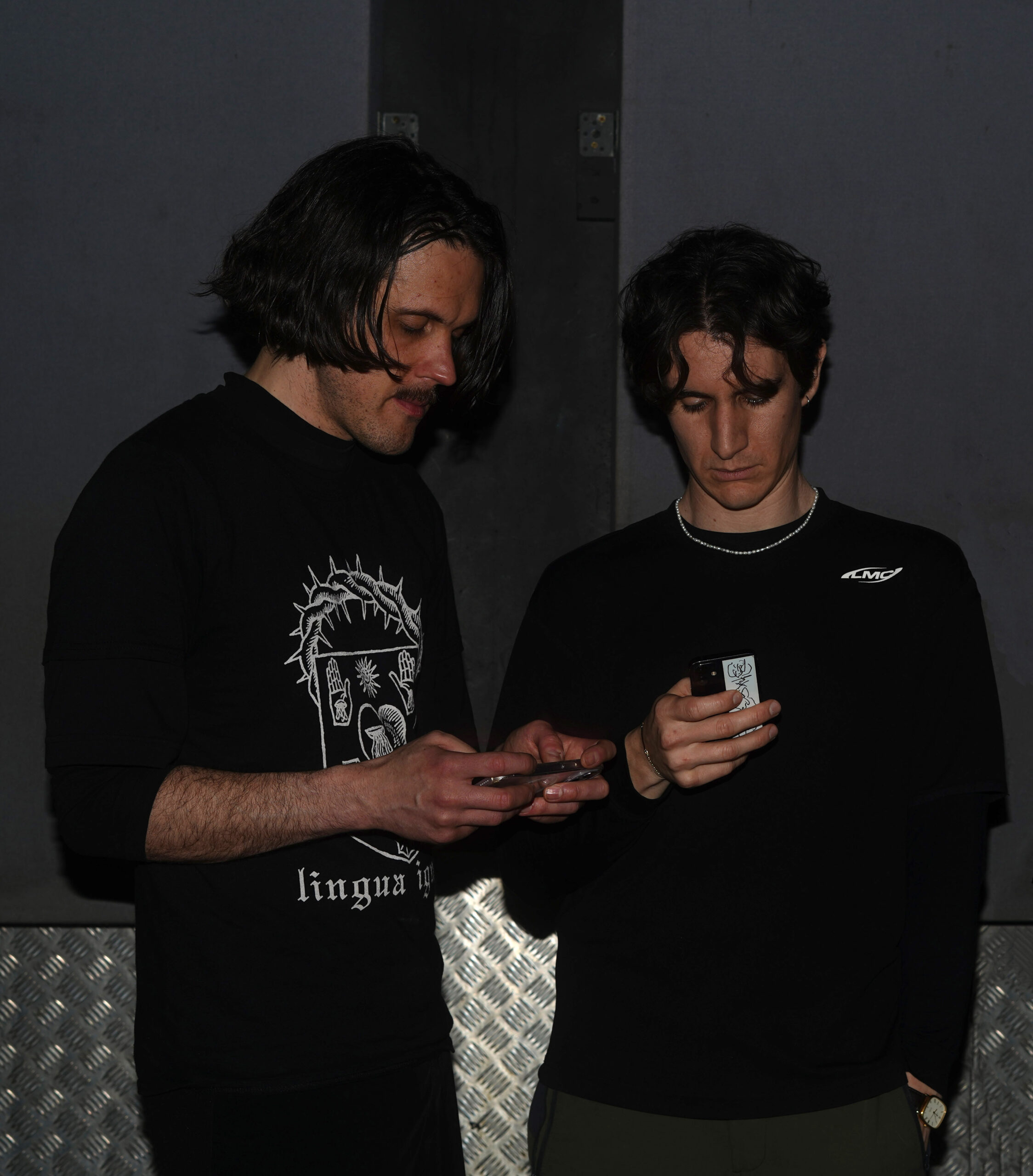
dmstfctn (UK)
dmstfctn is a London-based artist duo working with audiovisual performance, games, and video installation. Their work investigates complex systems by directly involving audiences – inviting them into the ‘demystification’ of systems by replicating and replaying them and into their ‘remystification’ by building worlds, characters, and myths atop them.
Since 2018, dmstfctn have performed and exhibited internationally in venues such as Serpentine, Design Museum, Berghain, HKW, and at festivals such as Unsound, transmediale, CTM, and Impakt. They have collaborated with scientific institutions such as the Alan Turing Institute and Leonardo Supercomputing Center.

